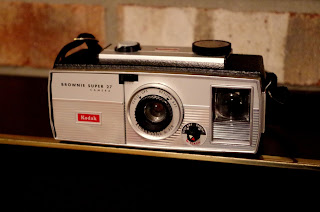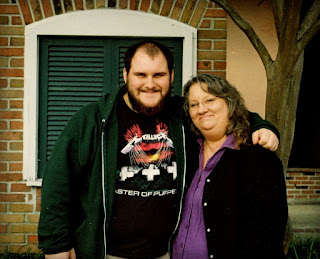The moon has stood as a silent sentinel over the nocturnal
affairs of man for thousands of years in its never ending dance around the sun with
planet Earth. Every twenty-eight days it reaches opposition and reflects the
full brunt of the sun’s light over the night. Although not nearly as bright as
the sun, the light of the full moon has its own magic and is sufficiently
brilliant to allow photographs to be made.
My first experience with photography and the moon came when
I attempted to photograph the moon itself. Surprisingly, it did not require a
long exposure at all. In fact (as I discovered) a good exposure of the moon can
often be taken at f8 - f16 and shutter speeds of 1/30 to 1/100. It is only the
night sky around the moon that is dark, not the moon itself.
When I decided to try to shoot portraits by the light of the
moon, I was astounded to find almost nothing anywhere on the World Wide Web
about it. Oh to be sure there were a few crazies out there like me who had
dabbled in it and even someone with a few tips for capturing landscapes in
moonlight, but I was shocked to find I might be the first to think portraits
taken in the light of the moon might hold special allure. Try as I may I could
find no information anywhere on the subject so I began as all pioneers do by
heading out on my own.
After just a couple outings and maybe a dozen exposures I
arrived at what I was looking for. The photograph above of my son Noah was shot with my Pentax
K-S1 on “Auto” with a +4 overexposure set on the EV compensation wheel to end up
with a 1 second exposure at f2.8 with the ISO @ 12,800 using the 40mm f2.8
Pancake lens. This lens is beautiful for portraits as well as other situations
calling for a fast, short telephoto lens. The autofocus worked splendidly once
I got the hang of “sighting-in” and focusing in the dark. I even tried “live
view” to no avail but the focus assist light was just enough for me to compose
and the camera’s AF to properly do its thing.
As you can see the image is not unlike a regular daylight
photograph but there is “something different” and unique about the lighting
that makes it easily distinguishable from similar daylight portraits that might
be taken in the same spot. If you didn’t already know it was taken in the light
of the full moon you probably would not identify it as such but you would
immediately recognize that it was different and perhaps think it had been shot
under some kind of special studio lighting.
This image was shot a couple days before the full moon. It
is noteworthy that the amount of light varies greatly from day to day and
increases 2% to 3% each day until it reaches full (100%) at the exact moment of
the opposition or “full moon” so that this image was taken with only about 95%
of the moon’s full lighting capacity. That may not seem to be a lot but over
the course of a couple days it can easily mean a difference of a stop or more.
My immediate plans are to collect a gallery of these
moonlight portraits to gain more experience and expertise and eventually to try
to duplicate the work on film. That will of course be the ultimate challenge
since there is no film available at ISO 12,800.
















